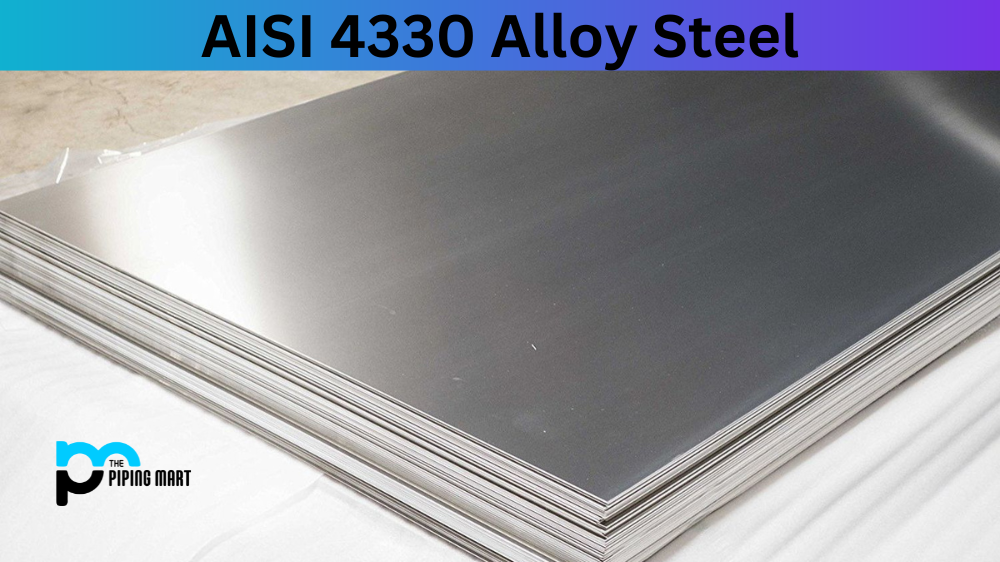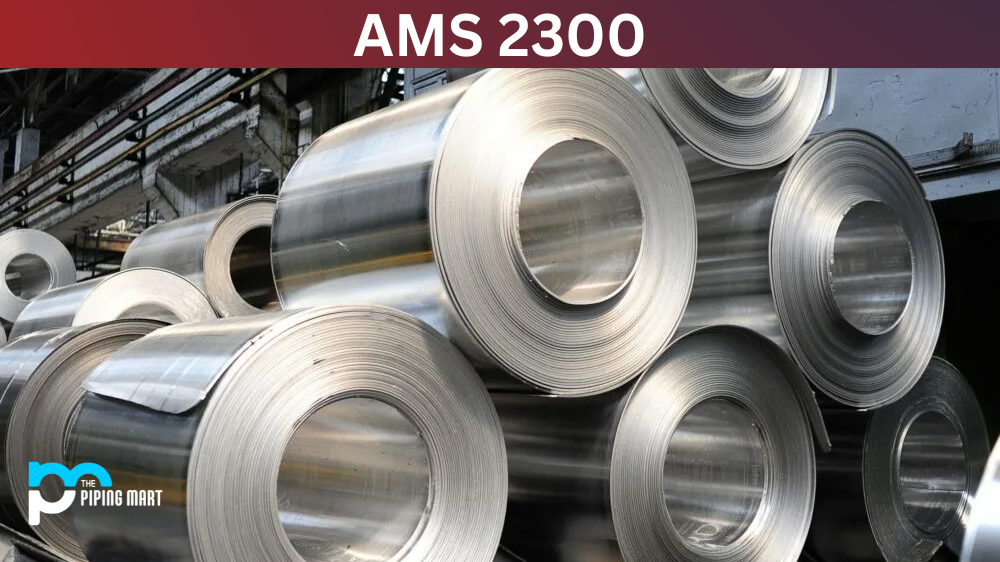AISI 4330 is a low alloy steel known for its exceptional strength and durability. AISI 4330 is commonly used in manufacturing for demanding applications such as aircraft parts, gears, and turbine blades. This blog post will explore everything you need to know about AISI 4330 Alloy Steel (UNS J24045), including its composition, mechanical and physical properties, corrosion resistance, heat treatment, machining, and welding.
AISI 4330 Alloy Steel Composition:
AISI 4330 Alloy Steel (UNS J24045) consists of carbon, manganese, chromium, nickel, molybdenum, and silicon. It also has trace amounts of sulfur, phosphorus, and copper. Combining these elements gives AISI 4330 Alloy Steel unique properties, such as high strength, toughness, and resistance to wear and tear.
| Element | Content (%) |
|---|---|
| Iron, Fe | 95.3-98.1 |
| Nickel, Ni | 1.0-1.50 |
| Manganese, Mn | ≤ 1.0 |
| Silicon, Si | ≤ 0.80 |
| Chromium, Cr | 0.40-0.60 |
| Molybdenum, Mo | 0.30-0.50 |
| Carbon, C | 0.20-0.30 |
AISI 4330 Alloy Steel Mechanical Properties:
AISI 4330 Alloy Steel (UNS J24045) exhibits excellent mechanical properties, which make it ideal for demanding applications. It has a tensile strength of 206,000 psi, yield strength of 167,000 psi, and a hardness of 240 HB. These mechanical properties make AISI 4330 Alloy Steel ideal for high strength and durability applications.
| Properties | Metric | Imperial |
|---|---|---|
| Tensile strength | ≥ 860 MPa | ≥ 125000 psi |
| Yield strength | ≥ 690 MPa | ≥ 100000 psi |
| Elongation at break (In 50 mm) | ≥ 15.0 % | ≥ 15.0 % |
| Hardness, Brinell | 285 | 285 |
AISI 4330 Alloy Steel Physical Properties:
AISI 4330 Alloy Steel (UNS J24045) has a density of 7.85 g/cm³ and a melting point of 1427°C (2600°F). It is also non-magnetic and has good thermal conductivity. The physical properties of AISI 4330 Alloy Steel make it a versatile material for various applications.
| Properties | Metric | Imperial |
|---|---|---|
| Melting point | 1427°C | 2600°F |
AISI 4330 Alloy Steel Equivalent
AISI 4330 Alloy Steel Uses
AISI 4330 alloy steel (UNS J24045) has many applications. It is commonly used in the aerospace, oil & gas and automotive industries for components such as aircraft structural parts, shafts, gears, fasteners and transmission components. It is also widely used in construction due to its high strength-to-weight ratio and excellent fatigue properties. Its ability to resist corrosion makes it resilient when exposed to harsh environmental conditions.
AISI 4330 Alloy Steel Corrosion Resistance:
AISI 4330 Alloy Steel (UNS J24045) is not considered a corrosion-resistant material. However, it can be coated to improve its corrosion resistance. Coatings such as electroless nickel and chrome plating can significantly enhance the corrosion resistance of AISI 4330 Alloy Steel.
AISI 4330 Alloy Steel Heat Treatment:
AISI 4330 Alloy Steel (UNS J24045) can be heat treated to improve its mechanical properties. Quench and tempering are the most common heat treatments for AISI 4330 Alloy Steel. This process involves heating the steel to a specific temperature, holding it at that temperature, and cooling it rapidly. This process can significantly improve the strength and hardness of AISI 4330 Alloy Steel.
AISI 4330 Alloy Steel Machining:
AISI 4330 Alloy Steel (UNS J24045) can be challenging to machine due to its high strength and toughness. However, it can be machined using high-speed steel or carbide-cutting tools. It is essential to use proper cutting fluids to prevent overheating and reduce tool wear.
AISI 4330 Alloy Steel Welding:
AISI 4330 Alloy Steel (UNS J24045) can be welded using various welding techniques, such as gas tungsten arc welding (GTAW) and gas metal arc welding (GMAW). It is essential to preheat the steel before welding to prevent cracking. Proper post-weld heat treatment and cooling are also necessary to prevent distortion.
Conclusion:
In conclusion, AISI 4330 Alloy Steel (UNS J24045) is a versatile material ideal for demanding applications that require high strength, durability, and resistance to wear and tear. Its unique composition and mechanical properties make it a popular choice in manufacturing. You can make informed decisions about using it in your applications by understanding the composition, mechanical and physical properties, corrosion resistance, heat treatment, machining, and welding techniques of AISI 4330 Alloy Steel. When working with AISI 4330 Alloy Steel, following proper safety protocols and using the correct tools and methods is essential to ensure the best results.

A passionate metal industry expert and blogger. With over 5 years of experience in the field, Palak brings a wealth of knowledge and insight to her writing. Whether discussing the latest trends in the metal industry or sharing tips, she is dedicated to helping others succeed in the metal industry.




